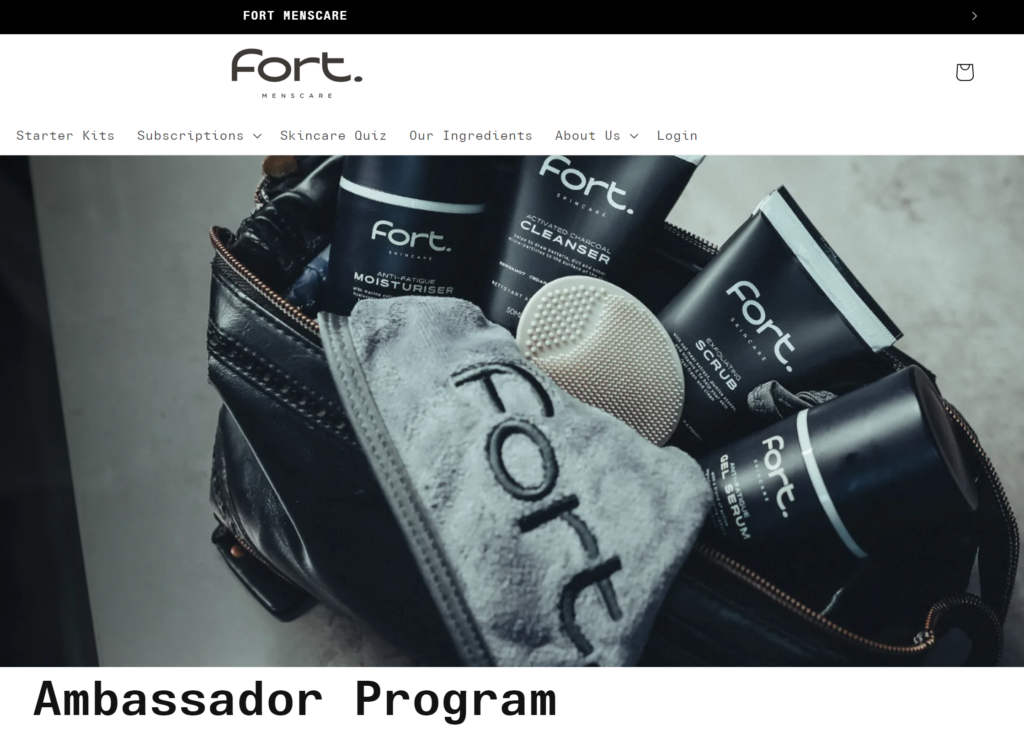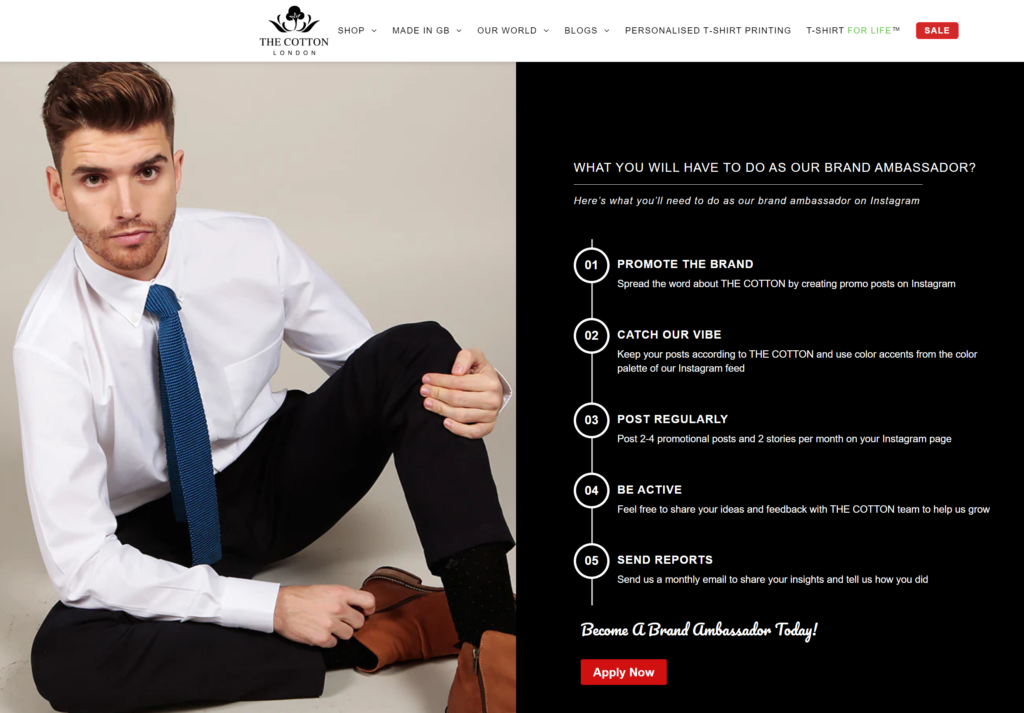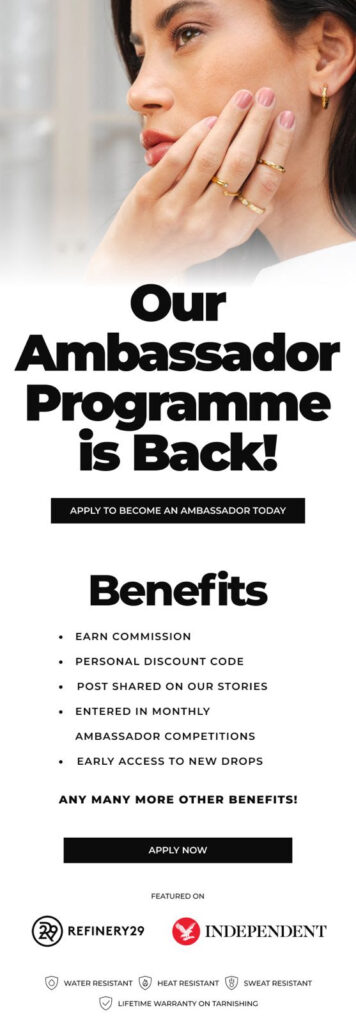Curriculum
- 2 Sections
- 72 Lessons
- Lifetime
- Project Influencer Guide Part 132
- 1.1Introduction
- 1.2Types of Influencers
- 1.4Influencer Toolkit
- 1.5Determine Your Niche
- 1.6Building your brand
- 1.7Get creative with your name
- 1.8Brand Identity
- 1.9Writing and Optimising your Bio
- 1.10Aesthetics: How to create a cohesive aesthetic to build your brand
- 1.11Instagram Presets
- 1.12Creating a social media account
- 1.13How to create a business Instagram account
- 1.14How to add content on Instagram
- 1.15Your first post on Instagram
- 1.16Making the most of Instagram’s other features
- 1.17All about Instagram Stories and Highlights
- 1.18How to switch to a business TikTok account
- 1.19How to add content on TikTok
- 1.20Your first video on TikTok
- 1.21Making the most of TikTok’s other features
- 1.22How to create a business YouTube Account
- 1.23How to add content to YouTube
- 1.24Your first Video on YouTube
- 1.25Making the most of YouTube’s other features
- 1.26Content posting schedule
- 1.27How Often should I post?
- 1.28Weekly Content Calendar: Instagram
- 1.29Weekly Content Calendar: TikTok
- 1.30Weekly Content Calendar: YouTube
- 1.31Helpful Tips
- 1.32Step-By-Step Checklist
- 1.33Next Steps
- Project Influencer Guide Part 240
- 2.1Introduction – Part
- 2.2Elevate Your Instagram Content
- 2.3Elevate Your TikTok Content
- 2.4Elevate Your YouTube Content
- 2.5Diversify Your Social Media Platforms
- 2.6Boost Engagement With Reels and TikToks
- 2.7Staying Updated With Trends
- 2.8Engage Your Audience
- 2.9Perform Audience Research
- 2.10Understanding Analytics
- 2.11Instagram Insights
- 2.12TikTok Analytics
- 2.13YouTube Analytics
- 2.14Monetisation
- 2.15Instagram Monetisation
- 2.16Instagram Sponsored Posts
- 2.17TikTok Monetisation
- 2.18Create a TikTok Shop
- 2.19YouTube Monetisation
- 2.20Brand Collaborations1
- 2.21Beyond Social Media: Why Your Brand Needs a Website II
- 2.22Key Strategies for Identifying Collaborative Brand Opportunities
- 2.23Invitation to Influencer/Creator Events
- 2.24Strategic and Professional Approach: Key Steps for Influencers When Approaching Brands
- 2.25How to Determine Your Rates
- 2.26Influencer Rate Checklist
- 2.27How To Approach Brands
- 2.28Troubleshooting: How To Approach Brands
- 2.29Brand Pitch Email Template Example 1
- 2.30Brand Pitch Email Template Example 2
- 2.31Brand Pitch Email Template Example 3
- 2.32Brand Pitch Email Template Example 4
- 2.33Influencer Media Kit
- 2.34How to Create Your Media Kit (3 Templates Included)
- 2.35Pitch Sent, Now What?
- 2.36Brand Partnership Agreement
- 2.37Extra Resources For Influencers: Must-Have Apps
- 2.3850 Additional Brands To Look Into As An Influencer
- 2.39UK Brand With Affiliate Programs For Influencers/Creators
- 2.40Congratulations!
Monetisation
MONETISATION
As an aspiring influencer, there are countless monetisation opportunities. Here’s a quick overview of some key methods to turn your social media passion into profit. We will then look at exactly how to create monetisation on each social media platform in greater detail.
1. Partnering with brands:
Sponsored content: Collaborate with brands relevant to your niche to promote their products or services in engaging posts, stories, or videos. It’s important to disclose sponsored content with clear hashtags like #ad #sponsoredpost #paidpartnership. We’ll explore this topic in greater detail further on.
Brand ambassador programs: Become a long-term partner with a brand, representing their values and promoting their products consistently.
Affiliate marketing: Earn a commission for each sale made through your unique affiliate links promoting various brands’ products.
2. Selling your own products or services:
Physical products: If you’re creative, sell artwork, crafts, or merchandise directly through your platform’s shop or your own website.
Digital products: Offer downloadable resources like guides, templates, or eBooks tailored to your audience’s interests.
Online courses or workshops: Share your expertise through paid online courses or workshops focused on your area of knowledge.
Consulting or coaching: Leverage your experience and skills to offer one-on-one consulting or coaching services to your audience.
3. Leveraging platform features:
Subscriptions: Offer exclusive content, early access to videos, or live Q&A sessions to paying subscribers through platforms like ‘Instagram Subscriptions’.
Live Badges: During live streams, viewers can purchase virtual badges to show their support and contribute financially. This is available on Instagram (Live Badges, TikTok (called Live Gifts) and on YouTube (Super Chat).
Tips or donations: Some platforms allow fans to directly tip or donate to creators, showing their appreciation.
4. Additional income streams:
Brand deals: Partner with brands for non-promotional activities like attending events or creating co-branded content, often without explicit product mentions. The focus is on building relationships and shared values, rather than directly pushing products.
Public speaking: If you’ve built a significant following, you can explore paid speaking engagements at conferences or events related to your niche.
Product collaborations: Work with brands to co-create limited edition products or merchandise, leveraging your audience and their design preferences.
Be yourself, build genuine connections with your audience and focus on creating valuable content they’ll appreciate. Don’t rely on just one monetisation method. Experiment and find a combination that works for you and your niche. Building a successful social media presence and generating significant income takes time, effort and continuous learning.
This is just a starting point! As you explore and refine your approach, you’ll discover even more ways to monetise your social media platform and turn your passion into a thriving business.




